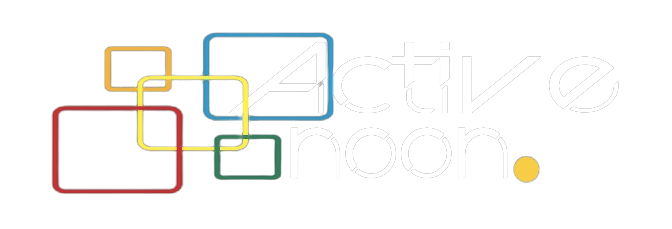Today, 95 percent of the world is covered by mobile networks, but 40 percent of the population using these networks face challenges that prevent them from being online. Mobile connectivity is often the only source of internet access for the underserved population, especially in emerging economies. And the lack of smartphone and internet access means people do not realize the benefits of education, telemedicine, support for social programs, and financial inclusion. Let’s discuss how the bridge of widespread smartphone adoption can be narrowed.
The pervasiveness of Digital Divide
In the post-pandemic world, the connectivity needs of a large underserved population remain unaddressed. The digital divide doesn’t solely exist because of a lack of access to connectivity infrastructure—device affordability, too, is a matter of concern. Smartphone ownership isn’t just an under-developing or developing-economy issue; it’s also a developed-economy problem.
Even when internet infrastructure is available, many people can’t access the internet. While cellular 4G connectivity or LTE is far more accessible than broadband connectivity, a usage gap exists. A BCG report shows that around 10 percent of households in low-income countries are covered by 4G connectivity but are not yet connected. And the prime reason for the usage gap is smartphone affordability.
Although mobile data costs have steadily declined, access to the internet is difficult due to prohibitively expensive smartphones. For instance, people in the lower income category in Nigeria must spend two months’ wages to afford a USD 150 smartphone.
A developed economy like the US reverberates a similar situation. Roughly a quarter of American adults from low-income tier, earning less than USD 30,000 a year, don’t own a smartphone. Unsurprisingly, the affordability gap increases for desktop or laptop ownership. With fewer online access options, people rely more on smartphones, making them ‘smartphone-only’ internet users.
Models for Increasing Smartphone Ownership
A prime roadblock in combating the digital divide is ensuring widespread smartphone usage. Efforts should be made to lower the cost of handsets and eliminate the upfront cost to people. There are a couple of emerging business models that can address the challenges faced by people from lower-income groups.
Smartphone financing
Many low-income people could potentially own smartphones if they could pay monthly installments. Access to smartphone financing from financial institutions or alternative credit providers can allow people to buy smartphones even when they can’t afford to make a single upfront payment.
Moreover, spreading out the payment of a smartphone purchase across several months helps manage the high cost of smartphones and allows individuals to get their hands on a smartphone earlier than they would through a full down-payment.
Alternative credit providers become important in offering smartphone financing because they can allow access to individuals who lack a credit history and may be excluded by traditional financial institutions. Such institutions rely on non-traditional sources, such as rent payment or mobile payment history, to bridge the gap between credit unscorable individuals and credit worthiness.
Further, unlike smartphone leasing, smartphone financing expands access to smartphones for the long term. Device leasing allows customers to use smartphones for a set period, while financing allows complete smartphone ownership at the end of the payment term.
Subsidies by telecom carriers
Subsidies can ease the pain of people looking for smartphones. But the efforts made by telecom carriers to increase smartphone penetration put tremendous pressure on margins and lead to higher operating costs. To manage high handset subsidy costs, telecom companies can reduce the number of players in the supply chain.
Telcos can purchase smartphones directly from handset manufacturers to provide white-labeled phones, avoiding royalty fees and benefiting from bulk purchases. Besides reducing supply chain costs, telecom carriers can explore various inventory management strategies–demand-responsive bulk buying, just-in-time buying, or partnering with structured agent networks–to manage costs.
Carriers can offer subsidized smartphones as a part of a contract or bundled plan. On the one hand, carriers can allow consumers to stay with their network longer by addressing handset costs, thereby reducing churn and increasing ARPU. On the other hand, OEMs can improve smartphone affordability in the long term.
Closing Digital Divide at Risk of Creating Non-Performing Assets
Although financial institutions, alternate credit providers, and telecom carriers are working on improving the affordability of smartphones through subsidies and financing mechanisms, they still run an inherent risk of bad debt–people defaulting payments over the payment term. In such cases, smartphone providers seek a return on the depreciated asset, resulting in revenue loss.
Unfortunately, smartphone providers don’t have an assurance mechanism to protect their revenue against payment default. No underlying layer of security can protect the investment when people default on monthly payments.
A point to ponder is how these providers can make smartphones accessible to the underserved population without bad debt risks.
Device financing Risk Management Can Bridge the Digital Divide
The good news is that significant technological investments are being carried out to support players who believe in closing the digital divide by empowering millions of individuals with smartphones.
Modern technologies, like device financing risk management (DFRM) platforms, enable companies to block smartphones in the event of delayed payments. A DFRM platform allows companies to follow up with customers remotely when payments are due.
The follow-up process continues until the customer makes the payment on time. Past the due date, the phone’s management features are restricted. DFRM tools allow end-users to access basic functionalities, such as emergency calls, even when devices are under restricted use.
Enabling smartphone providers with a certain level of control to encourage individuals to make timely payments should decrease the number of defaults and non-performing assets.
Besides ensuring payments, DFRM can also cut costs. It automates the payment process, so smartphone providers don’t need to invest in collection agencies to recover debt and improve collections. Companies can thus provide access to smartphones without risking bad debts.
Wrapping Up
Ensuring more people use mobile internet instead of focusing on network coverage is key to driving financial inclusion for 3.2 billion people worldwide. Companies leveraging the right solutions can extend smartphone ownership to the underserved audience without additional commercial risks. A win-win situation, don’t you think?

















Leave a Reply